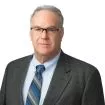The PTAB recently held that patent claims need not "particularly target the financial industry" in order to qualify as a "covered business method" under Section 18 of the America Invents Act (AIA). Symphony Health Solutions Corp. v. IMS Health, Inc., Case CBM2015-00085 (Patent 8,473,452 B1) (PTAB Sept. 10, 2015). Rather, it is enough that the "challenged claims recite a system and method used in the practice, administration, or management of financial services and products."
At issue are claims to a system and method that "de-identifies health care records." Essentially, the system takes patient records from a health care database, removes the information in the patient's record that particularly identifies the patient - i.e. "de-identifying" the name, address, SSN, etc., and then uses the de-identified record to generate reports on the market trends and shifts, sales force targeting, and demographic, among other things.
In reviewing the Petition, the PTAB held that §18(d)(1) of the AIA actually "does not require that the claimed invention particularly target the financial industry," an argument the Patent Owner had made during the proceeding. The PTAB explained its reasoning:
each claim recites a "health care field" relating to "health care data," which is described in the specification as including claims data, such as pharmaceutical, medical and hospital claims data, i.e., claims for receiving payment or reimbursement. The system and method are disclosed as being used to generate reports such as market shares, sources of business, and patient demographics. Further, the specification discusses the use of the claimed system "in a number of ways to help make business decisions," including enhanced sales force targeting, early warning of market share shifts, and accurate intelligence on market size and demand
Thus the PTAB found that Covered Business Method review was appropriate because the claimed system was used "in a number of ways to help make business decisions" and the Board determined that the claimed system and method recite "activities used in the practice, administration, or management of a financial product or service."
Once the PTAB overcame the issue of whether the claims were directed toward financial services and products and found that the claims were not directed to a "technological invention" (technological inventions are excluded from CBM review), it further found it more likely than not that the '452 patent was not patent-eligible under §101, and that the patent claims were likely obvious over prior art.
This PTAB decision appears to indicate that covered business method review is available for more patents than those particularly targeting large financial institutions and industries. The decision also seems to provide further support for the notion that inventions disclosed and claimed as "technological inventions" (an invention that "solves a technical problem using a technical solution") may fare better in the post AIA, post-Alice world.
The content of this article is intended to provide a general guide to the subject matter. Specialist advice should be sought about your specific circumstances.



